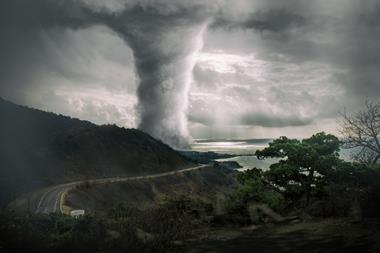Medium-sized enterprises (MSEs) play a vital role in our economy. However, these companies face unique challenges when it comes to risk management, particularly in dealing with natural catastrophes such as storms, flooding, or earthquakes.
Traditional insurance may not always offer the comprehensive coverage needed, leaving MSEs exposed to potential financial volatility. Caroline Pritchard, head of customer & distribution management EMEA at Swiss Re Corporate Solutions explains how parametric insurance is gaining momentum as a viable and effective alternative.
MSEs, like their larger counterparts, operate in a complex world where risks abound. Yet, they may find it challenging to secure traditional insurance coverage that suits their needs.
This difficulty becomes even more pronounced for businesses operating in multiple regions, as they contend with more frequent and intense natural disasters amplified by climate change.

Such events can disrupt operations, damage assets, and affect supply chains, posing significant financial challenges. However, Pritchard says that parametric insurance helps tackle many of these risks, making them a compelling choice for MSEs.
She explains: “Parametric insurance can help companies address exposure that isn’t covered by traditional risk transfer solutions. We see it as a potential way to address some of the coverage gaps, that is complementary to traditional insurance products.”
Some of the key benefits of parametric insurance for MSEs include:
Swift payouts
In times of crisis, MSEs need access to funds quickly to maintain business continuity.
Parametric insurance payouts are predefined, and they are triggered based on pre-agreed indexes, such as wind speed, river water levels, or earthquake intensity, published by trusted third-party sources like government agencies. This streamlined process allows for prompt claims processing, within 30 days or less, ensuring that MSEs can recover rapidly.
Pritchard says: “The first 90 days following a disaster are the most critical in helping an organisation recover, and once you’ve agreed the design of your parametric insurance, one of the real benefits is that it has super-fast payout.”
”Parametric insurance can help companies address exposure that isn’t covered by traditional risk transfer solutions.”
Flexible use of funds
Parametric insurance isn’t confined to covering physical damages alone. It can protect against non-damage business interruption, supply chain disruption, and decreased foot traffic following a natural catastrophe.
Pritchard says: “MSEs can employ the payout to address supply shortfalls or explore alternative suppliers, bolstering their resilience.”
Tailored solutions
By collaborating with insurance brokers, MSEs can tailor parametric insurance to suit their specific needs. Pritchard emphasises the importance of working with experienced brokers, particularly for MSEs that do not have dedicated risk managers.
She says: “Parametric insurance can be a part of a discussion as a potential solution to transfer risk differently. The broker has a key part to play as they often act as the outsourced risk manager for businesses lacking in house risk management capability and expertise .”
Better preparedness
It’s important for MSEs to be acutely aware of the risks posed by natural catastrophes, as these events can have a profound impact on their operations and financial well-being.
Parametric insurance offers a dynamic and effective solution to bridge the gaps left by traditional insurance products. With its speed, flexibility, and tailored approach, parametric insurance is poised to be a critical resource for MSEs as they navigate the increasingly challenging landscape of natural catastrophe risks.
Pritchard concludes that these products, d when structured appropriately with expert partners, can deliver efiicient and effective solutions that compliment traditional insurance contracts.
You can find more about the topic on Swiss Re Corporate Solutions.



















